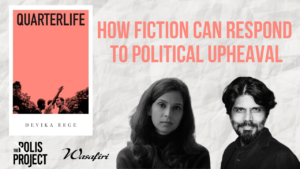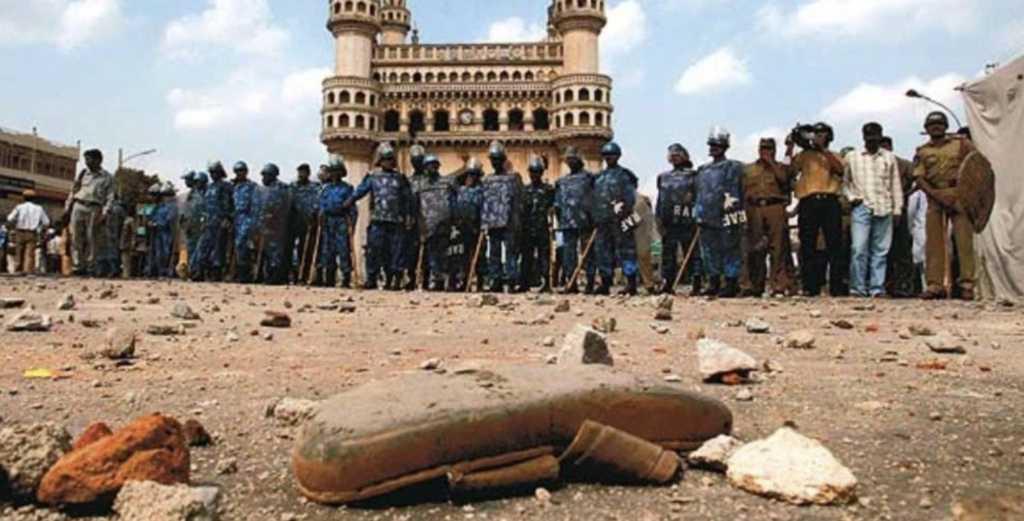
The Truth Machines: Policing, Violence, and Scientific Interrogations in India – A book excerpt

Excerpted with permission from the chapter “Scaffold of the Rule of Law—Terror Suspects and the Experience of Violence” in the book The Truth Machines: Policing, Violence, and Scientific Interrogations in India, University of Michigan Press, 2020. You can also read the book here through open access.
The Mumbai Blast Case
On July 11, 2006, seven bombings occurred on local trains in Mumbai. One hundred eighty-nine people were killed and over eight hundred injured. Once the Anti -Terrorism Squad (ATS), Mumbai, took over, thirteen men were charged with the crime either as members of the Students Islamic Movement of India (SIMI), or as Lashkar-e-Taiba. In 2015 twelve of them were convicted and one acquitted.[i] By the time of the trial, the accused had already spent seven years in jail, having been charged under the IPC as well as under two extraordinary laws, the 1967 Unlawful Activities Prevention Act and the 1999 Maharashtra Control of Organised Crime Act (MCOCA).
The investigation, in this case, shares features of the Hyderabad case— notably, Muslim men picked up for questioning because of long-standing enmity with the police. One of the accused mentioned a dispute with a police officer stemming from his complaint about the officer’s role in removing a slum area and a subsequent incident in which this officer had fired his weapon and a relative had died.[ii] Some were also suspected members of SIMI, with travel to Iran and Pakistan a cause for suspicion.[iii] As a policeman explained to one of the accused, “If they catch a cycle thief, they foist all such unsolved cases on him.” [iv] Observers challenged aspects of the trial court judgment, and some concerns of torture were raised in courts along the way.[v]
All the accused were reportedly tortured, and twelve of them confessed.[vi] The accused reported torture with methods—most commonly electric shocks and beatings with a flour mill belt—that appeared to be more systematic than in the Mecca Masjid case. As one recounted, the police “started beating me by flour mill belt and sticks on my palm[s] and soles. I was tied by rope and given electric shocks to my private parts.”[vii] Other methods included stripping men naked, putting them in stress positions, beating the palms of their hands and feet, and forcing them to sit with their feet at 180 degrees. One detainee mentioned the injecting of liquid chemicals through the anus.[viii]A torture room used by the ATS figures in these narratives. Methods for instilling fear were threats of torture, detention, and extrajudicial killing, together with the targeting of family members, including the threat of rape for women. Family members might be brought to the station to be harassed and insulted and occasionally also subjected to stripping and beating.[ix]
As one detainee noted, the police “threatened that if we complain about beating and torture, they would involve our family members in the case and would torture us more. Therefore, I did not say anything before the judge because of the fear.”As in the Mecca Masjid case, the magistrates in front of whom these men were produced rarely inquired closely into their cases. Rather, before each hearing, the accused were threatened not to reveal their experiences. As one detainee noted, the police “threatened that if we complain about beating and torture, they would involve our family members in the case and would torture us more. Therefore, I did not say anything before the judge because of the fear.”Another of the accused explained that he was produced in front of both doctors and magistrates, none of whom intervened in his situation.[x]
All suspects were taken to Bangalore Hospital for narcoanalysis, where they were interrogated by forensic psychologists. At least one was at first, apparently, relieved to be facing a person wearing a laboratory coat rather than a police uniform and reported feeling relaxed about the test:
The narco-test, he believed, would clear the “misunderstanding” and he would be spared the ordeal of being further tortured. It would prove him to be innocent, he was convinced. He, in fact, greeted Dr. Malini in Bangalore and blurted out, “I am innocent, Ma’am.” But, the doctor ignored him and did not seem to have taken any notice of what he had said. That was when he began worrying.[xi]
The accused also insisted that they were forcibly asked to consent to narco- analysis.[xii] Consent in custody thus becomes a charged concept, as the following account demonstrates:
Dr. Malini misbehaved and slapped me twice before the test. They asked me to say some things before a video camera and beat me before asking me to say the sentences. She threatened that if I do not give correct answers, she would give me [an] AIDS injection. I became semiconscious after the injection of [the] narco test was given. She asked illogical questions to me during this condition. The camera was switched on, and first, she asked how many bombs were prepared. I answered that I am not concerned and I am falsely involved. She slapped me strongly and started pinching my left ear with pliers, because of which I suffered much. She then asked me what comes after six and I answered “seven.” She asked me on what TV operates and I answered that it operates on electricity. She again slapped me strongly and caught my ear with pliers and told me to say “by remote.” She asked me many such illogical questions and used to ask me to repeat the answers if I did not give the expected answers. Both tortured me badly during the narco test. [xiii]
Human rights activists have criticized narcoanalysis as a violation of the self-incrimination clause of the Indian Constitution, and with questions asked of someone not fully conscious, and the entire process also violates human dignity. Human rights activists have criticized narcoanalysis as a violation of the self-incrimination clause of the Indian Constitution, and with questions asked of someone not fully conscious, and the entire process also violates human dignity. This instance, however, appeared to violate even the self- proclaimed standards for narcoanalysis as conducted in a hospital or forensic laboratory away from police custody. Pliers were reportedly used during the procedure, illogical questions were asked, and specified answers were demanded. Each test concluded with an interrogator’s insistence on a signature on a tailored confession. The depositions in these cases thus undermine even any claim to replacing torture with narcoanalysis and police with forensic psychologists.
The simultaneity of torture and truth machines is important here. Torture leads to a confession that must be recreated through a “nonphysical,” scientific technique. According to both the accused and their lawyers, CDs from narco- analysis sessions were edited to suit the police narrative. As a lawyer described the account of one of the accused, “They played the CD of the narco test to me, and I was shocked to see that in place of my reply to the question as to how many bombs were prepared, the reply was ‘seven.’ Anyone could see that the CD was edited because the words were not in sync with the video.”[xiv]
Another of the accused, who had undergone narcoanalysis three times, explained that he had been asked to repeat things he had not done, and his responses were then edited to appear as if he had confessed to committing them.[xv] As Shaikh warns in Begunah Qaidi, suspects should never answer in the negative, because their responses could be manipulated to appear as if they were answering other questions.[xvi] The video camera thus becomes a means for generating public confessions. Nonetheless, a video that is awkward or out of sync might also serve as evidence for the failure of narcoanalysis except that, as noted in the previous chapter, the forensic psychologist’s report creases out any inconsistencies and the public versions of videos edited.
If they protested, the accused were tortured again. One had an infected ear from the use of pliers, but he was warned not to complain or the torture would be even more brutal. If they protested, the accused were tortured again. One had an infected ear from the use of pliers, but he was warned not to complain or the torture would be even more brutal. Another detainee described waterboarding: “A wet cloth was put on my face, because of which I was not able to breathe. They had an apparatus with them, by which probably they were measuring my blood pres- sure[,] and after a certain level was reached, they used to remove the cloth.”[xvii] Only when he agreed to confess did the torture stop. He was then given some ointments or taken to the hospital, where he was warned not to complain to the doctor. When a higher officer asked him to repeat the confession, he was tortured again.[xviii] Only occasionally, he recalled, would a magistrate ask for a medical examination, but doctors mostly overlooked his injuries,[xix] even when they were aware of severe torture. Officials, citing national security concerns, told detainees not to report evidence. As another recounted, “If sometimes the medical officer asked us, the officer or constable used to reply that there is no problem. It usually happened that the doctor did not ask us anything, but obtained our thumb impression.”[xx]
Rather than replacing torture, therefore, truth machines merely change interrogation procedures so that suspects are taken to different settings and face different actors. Before a court hearing, suspects might be allowed to sleep so that they did not appear tortured in front of the magistrate. As one accused explained, “I was taken for medical checkup many times during police custody, but was not physically checked by the doctors, not allowed to speak with the doctors; the veil was not removed at any time, but only my thumb impressions were taken.”[xxi] After his brother was also tortured, another of the accused realized that the panchnamas (record of investigation) he was forced to sign involved recovery of admissible evidence. Physicality thus remains central to the IEA. The body must provide proof. Doctors and magistrates, charged with ensuring the veracity of procedures, thus fail to challenge physicality.
Rather than replacing torture, therefore, truth machines merely change interrogation procedures so that suspects are taken to different settings and face different actors. For example, one detainee cited illegal narcoanalysis conducted at ATS headquarters:
A person wearing an apron and having white spots on his face was with them. Deshmukh told me to repeat what they tell me and if I do not do, as they say, they would give me more dose, because of which I may die. I refused and did not follow their instructions. Deshmukh tortured me there itself, made me half unconscious, and did my narco test.[xxii]
Another had undergone narcoanalysis at the chowki (police station), a setting also noted by a forensic psychologist.
In convicting twelve of the accused, the trial court spent some of its eighteen- hundred-page judgment considering allegations of torture and forced confessions (which were mostly retracted). In their depositions, the accused had to reaffirm that their allegations had not been prompted by the al Qaeda manual urging them to allege torture by the police investigating agency.[xxiii] Ultimately, however, the judge explained away their allegations by citing scant medical evidence and injuries that could be attributed to a variety of factors. Their lack of complaints when in front of magistrates was also a consistently cited reason for disbelief. Doctors and magistrates thus became central to the process and central as well to the scaffolding of the rule of law.
Reports of cases from Maharashtra (where Mumbai is located) acknowledge the highest number of custodial death cases there, including those due to torture. This finding led the high court to attempt a reduction in custodial deaths, with a determination that closed-circuit television (CCTV) should be installed in all jails and lockups. [xxiv] Suspects’ experiences, however, suggest that cameras can be manipulated and videos edited, so CCTV is likely an uncritical means of ensuring accountability especially if magistrates and doctors are unwilling to scrutinize the process closely. Keeping these high-profile cases in mind, then, how do we contextualize the apparatus of policing, the rule of law, and the techniques of interrogation?
Jinee Lokaneeta is a professor in political science and international relations at Drew University in Madison, New Jersey.
[i] The thirteen were Faisal Shaikh, Ali Bashir Khan, Mohammad Ali, Majid Shafi, Sajid Ansari, Kamal Ansari, Ethesham Siddiqui, Zameer Shaikh, Sohail Shaikh, Muzammil Shaikh, Tanvir Ansari, Naved Hussain, and Abdul Wahid Shaikh (the only one who got acquitted). They were charged with sections of the IPC, the Indian explosive acts, Prevention of Damage to Public Property Act, the offences under the Indian Railways Act, and two extraordinary laws—namely, the Unlawful Activities Prevention Act (UAPA, 1967) and the Maharashtra Control of Organised Crime Act (1999). MCOCA was initially enacted in the context of Maharashtra and then applied to Delhi as well, and versions of it were introduced in Karnataka and Andhra Pradesh. It is said to have extremely high conviction rates as compared to the Terrorism and Disruptive Activities (Prevention) Act (TADA). One of its most controversial provisions is allowing the use of intercepted communications—wire, oral, or electronic—in the case. It also allows for confessions to be recorded by senior police officials (above the rank of superintendent of police) and introduced against the co-accused, abettor, or conspirator. (On this point, see U. K. Singh, State, Democracy, and Anti-Terror Laws).
[ii] DW 49, or Asif Bashir Khan. Throughout the deposition, the name of the policeman keeps coming up as a consistent figure of intervention and torture. (“DW” refers to the deposition of witnesses for the defense, so accused). All depositions quoted in this section are on file with the author.
[iii] DW 47, or Muzzammil Ataur Rehman Shaikh, and DW 44, or Suhail Mehmood Shaikh.
[iv] DW 49, or Asif Bashir Khan, 4.
[v] For instance, one major issue that came up was the emergence of confessions by members of the Indian Mujhaheeden in the subsequent 2006 blast case that they were involved in. The lawyers for the accused wanted the confessions to be treated as evidence in the Mumbai blast case, but the trial court didn’t allow that, and the motion went right up to the Supreme Court, which disagreed with the high court that those confessions could be brought in through the police officers who recorded them or that the confessions could be admitted despite the fact that they were not all about the same case and accused. State of Maharashtra vs. Kamal Ahmed Mohammed Vakil Ansari & Ors., March 2013. CRIMINAL APPEAL NO.___445______OF 2013 (Arising out of SLP (Crl.) No. 9707 of 2012)
[vi] Other depositions mention the names of other accused who were also tortured.
[vii] DW 46, or Mohd. Sajid Marghoob Ansari, 15.
[viii] DW 49, or Asif Bashir Khan.
[ix] DW 44, or Suhail Mehmood Shaikh, and DW 47, or Muzzammil Ataur Rehman Shaikh, who mentions his father being stripped and beaten and his sister-in-law’s veil be- ing removed.
[x] DW 44, or Suhail Mehmood Shaikh.
[xi] Abdul Wahid Shaikh quoted in Vikrant Jha,“NH Conversation: A Case of Doctored Narco-Analysis,” National Herald, May 12, 2017, https://www.nationalheraldindia. com/nh-conversation/2017/05/12/nh-conversation-a-case-of-doctored-narco-analysis- abdul-wahid-shaikh-mumbai-train-blast-case-begunah-qaidi
[xii] DW 46, or Mohd. Sajid Marghoob Ansari. This may be a little transformed post selvi in 2010 when the Supreme Court determined that consent had to be ensured voluntarily.
[xiii] DW 46, or Mohd. Sajid Marghoob Ansari, 25.
[xiv] Interview with lawyer, Mumbai, December 2013.
[xv] As DW 49, or Asif Bashir Khan, put it, “She told me to repeat what they say. She told me to say ‘maine blasts nahi kiya’ [I did not do the blasts], ‘maine bum nahi banaya’ [I did not make the bombs], ‘maine conspiracy blasts karneki nahi ki’ [I did not do the conspiracy blasts][,] and ‘main co-accused ko janata nahi hu’ [I don’t know the co-accused], etc. [,] and they were doing the video shooting of the statements that I was making[,] and if I did not talk properly they used to torture me” (40).
[xvi] Shaikh, Begunah Qaidi. All translations from Hindi to English are by the author.
[xvii] DW 46, or Mohd. Sajid Marghoob Ansari, 29
[xviii] Confessions were either signed, or videos were recorded.
[xix] DW 46, or Mohd. Sajid Marghoob Ansari
[xx] DW 44, or Suhail Mehmood Shaik, 12
[xxi] DW 47, or Muzzammil Ataur Rehman Shaik, 9.
[xxii] DW 49, or Asif Bashi Khan 31
[xxiii] DW 49, or Asif Bashir Khan (accused in two cases), Kalachowki ATS unit.
[xxiv] See the Valdaris case. Jayshree Bajoria,“When a Father Handed Over His Son to the Police in Mumbai and He Never Came Back,” Scroll.in, December 19, 2016, https:// scroll.in/article/824452/when-a-father-handed-over-his-son-to-the-police-in-mumbai- and-he-never-came-back





